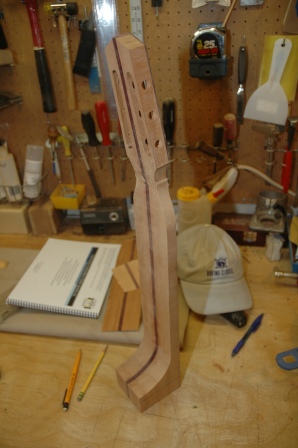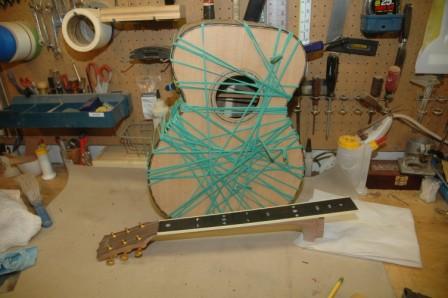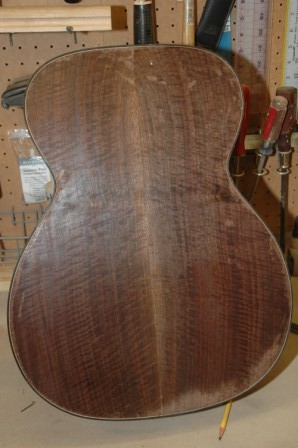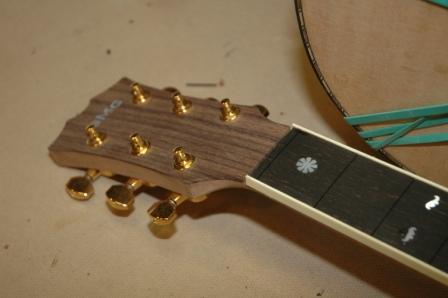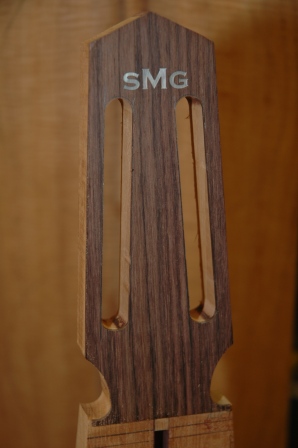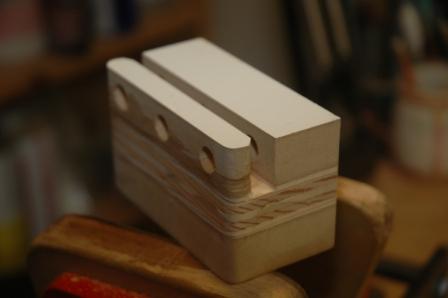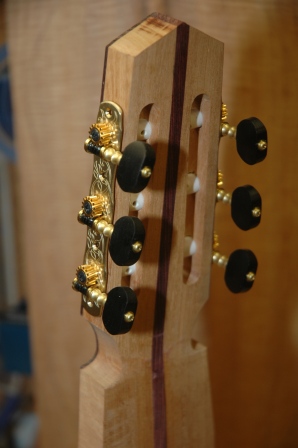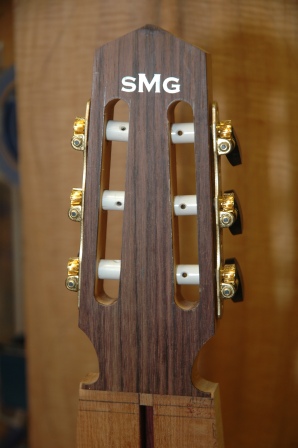January 17, 2011
I am compelled to offer an apology to my customers. I am developing the prevailing luthier ethic of taking a long time from inception to construction of my guitars. It doesn’t help that I am a full time intern teaching high school math, or that I am enrolled in a program at CityU which has classes, homework, and assignments. I like to read and watch old episodes of Lost, and the dog needs walking on a daily basis.
It also doesn’t help that I have 5 guitars/ukes in the pipeline, not to mention the several repairs/restorations which have been ignored in favor of building for way too long. I have a koa dreadnought waiting for the spray booth (I want it to get warmer in the garage, as well as less leaky from the rain). I have an apprentice who comes twice a week, and together we are completing a walnut OM. My first uke, a spruce/bubinga tenor, is still in progress, and wants to be ready for the spray booth coincident with the koa dreadnought. There’s the palo escrito hybrid cutaway that gets my attention every few days, and finally a koa tenor uke for my sister, which has some early attention.
I ramble here to make amends and assure all of you waiting for your special guitar/uke, that I’ll do my best to deliver as soon as it is possible. The delivery date isn’t as important as the righteousness of my attention.
